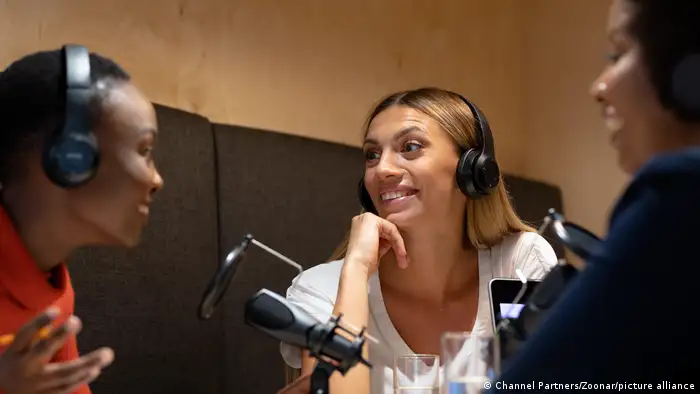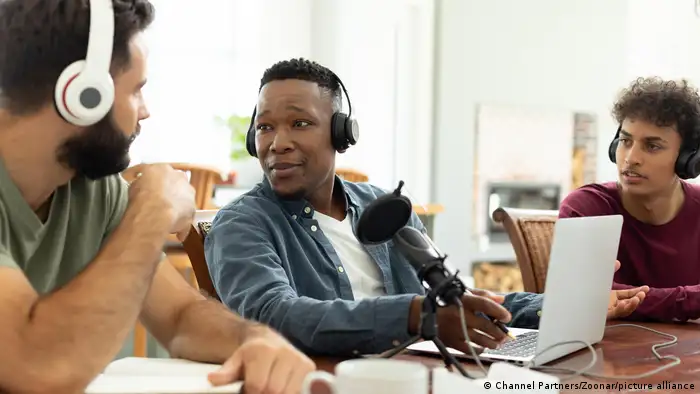Podcasting
Strategies to spark podcasting enthusiasm in new markets
In countries where podcasting is in its infancy, you can encourage a growth squirt. Here are strategies to help transform a relatively unknown medium into a powerful outlet for new voices and innovative storytelling.
Most people have read the numbers: podcasting continues to grow by leaps and bounds, despite the occasional bump in the road. Around the globe, the number of podcast listeners reached almost 465 million in 2023 and that number is predicted to reach almost 505 million next year. Recent studies have found 78 percent of the US population is aware of podcasts while in Australia that number is 91 percent. Podcasting in many countries has gone mainstream.
But not everywhere. In other countries, podcasting is still in a relatively early stage of development. Or there can be a strong urban-rural divide, with podcasting pick-up limited to big cities and group who are more educated or affluent. Various factors can account for this, including digital connectivity rates, high data costs or simple awareness – in many places, even the word “podcast” can have people scratching their heads. Where podcasting is not well developed, producers are faced with a unique set of challenges and opportunities.
For those looking for ways to help podcasting gain traction in a region where it might not be very popular yet, we’ve put together some strategies based on our own experiences in young markets as well as conversations with others. While it’s likely that podcasting will arrive almost everyone eventually, it’s possible to do a few things to help the process along, raising general awareness and building new and loyal audiences.
1. Educate: Knowledge is power
In countries where podcasting is relatively unknown among certain groups, education is key. Create content that explains what podcasts are, why they can be beneficial and how to listen. Put together easily understandable materials – in local languages – and put them on social media, in newspapers, or on flyers and billboards. Talk about podcasting where audiences get their information. You want to ensure that potential listeners from various groups – not just the digitally savvy in the cities – know how to access them.
2. Localize: Make it relatable
To really resonate with a new audience, podcasts need to speak their language – both literally and figuratively. Lead groups to content that reflects local culture, traditions and interests. Incorporate regional stories, topics and guests – not to mention music and other sounds – that listeners can relate to on a personal level. A number of localized distribution platforms have come onto the scene, such as Afripods and Tunisia Podcasts, that highlight creators from a particular continent or country. Through them, people can easily find content they can identify with.
3. Get Hands-On: Workshops and Events
Sometimes a Facebook post can only go so far. Organize free workshops and events in local communities to provide hands-on experience with the basics from show creation to distribution. Or hold a podcasting festival to bring people together and create buzz. For example, the Tunisia Podcasts Festival in December has two aims: bringing experienced podcasters together to network and collaborate and introducing the larger community to podcasting through engaging listening and recording sessions.

Where podcasting is not well developed, producers are faced with a unique set of challenges and opportunities
4. Find allies: Influencers and community leaders
Find out who has sway in the community and contact them about collaborating about introducing podcasting to listeners. These people have fans, and they can amplify your message, lend credibility and build curiosity and even excitement around podcasting.
5. Partner up: Approach governments and NGOs
Seek out areas of cooperation with local governments, international organizations and NGOs. See about integrating podcasting into educational and development programs. In Tunisia, for example, Germany’s GIZ development agency supported young people creating podcasts there with training and equipment. Those productions have turned into some of the country’s most successful shows.
6. Cross-Promote: Collaborate with local radio
Bridge the gap between traditional media and podcasting by working with local stations. See if they’ll promote your podcast during their broadcasts. That way you’ll introduce the concept to a wider audience, one that’s already a fan of audio content.
7. Add pictures: Think about video
While podcasting started off as an audio format, video podcasts are gaining in popularity. The number of podcast producers who record their episodes in video format is still a minority (and die-hard audio enthusiasts probably hope it’ll stay that way), but the Podcast Index found that the number of video podcasts grew 25 percent in six months from Nov. 2022 to May 2023. In parts of the world where visual media is dominant, video podcasts can be a way in with audiences that might not attracted to purely audio content.
8. Build momentum: Support local podcasters
Encourage podcasting growth by supporting and promoting local podcasters. Helping them succeed not only fosters a sense of community among local content creators but serves as a model for potential producers. If they can do it, why can’t I? Go for a snowball effect.
9. Stay calm: These things can take time
Introducing podcasting to a new market can requires patience and adaptability. It might just take a while to gain traction. All you can do is listen to your (potential) audience, learn from their preferences and habits, and then tweak what you do. If you’re worried about older people or rural communities getting on the podcasting train, just think about Facebook. In the early days, it was the young, urban and tech-savvy who were clicking “like”. These days Grandma and Grandpa likely have accounts.
DW recommends
- Date 30.11.2023
- Author Kyle James
- Feedback: Send us your feedback.
- Print Print this page
- Permalink https://p.dw.com/p/4ZbvZ
- Date 30.11.2023
- Author Kyle James
- Send us your feedback.
- Print Print this page
- Permalink https://p.dw.com/p/4ZbvZ

